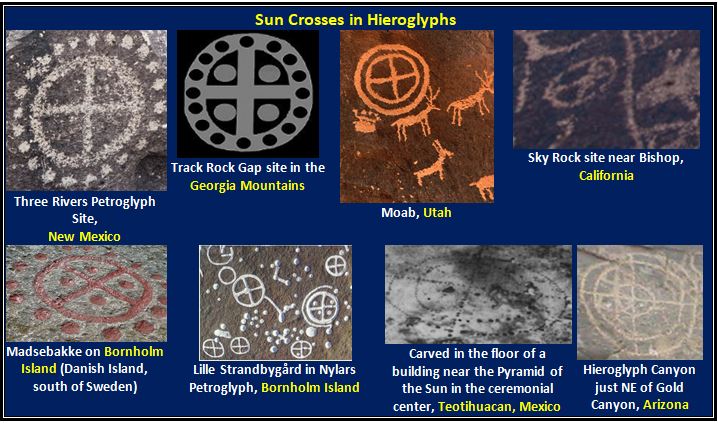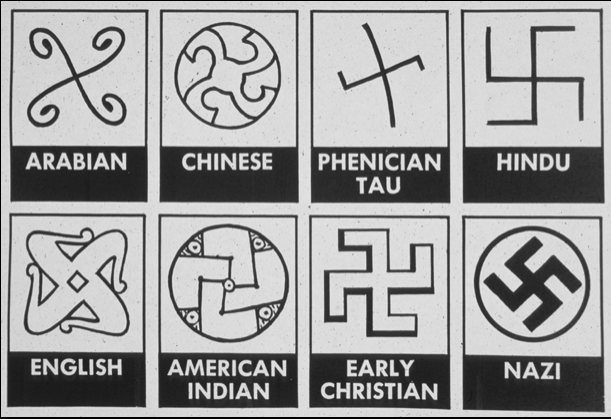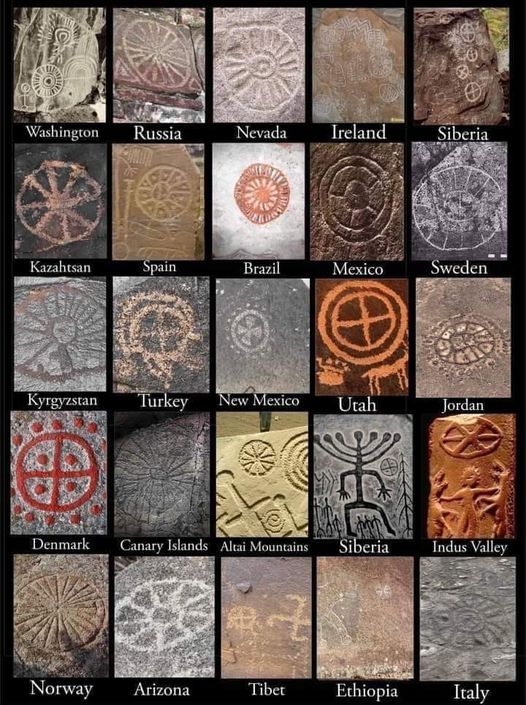The Sun Cross, also known as the Solar Cross or Sun Wheel, is one of the oldest symbols known to humanity, tracing back to prehistoric cultures. This ancient emblem has been discovered in various parts of the world, holding diverse interpretations across different civilizations. Believed to be one of the earliest religious symbols, the Sun Cross connects to Indian, Asian, American, and European religious art from prehistoric times.
Archaeological Evidence
The symbol and its numerous variations have been unearthed globally. Bronze Age carvings depict the Sun Cross on burial urns dating back to 1440 BC. It also appears on ancient cave walls, in places of worship, on coins, artwork, sculptures, and architectural structures. These widespread findings highlight the symbol’s significant role in various ancient societies.

Basic Form and Norse Interpretation
The most basic form of the Sun Cross features an equilateral cross set within a circle. In Norse culture, this variation is known as Odin’s Cross, representing Odin, the most powerful of the Nordic gods. Interestingly, the English word “cross” is derived from the Norse word for this symbol – “kros.”
Celtic Symbolism
The Celtic pagan god of thunder, Taranis, was often depicted holding a spoked wheel, commonly associated with the Sun Cross. This wheel has been discovered on Celtic coins and jewelry. The Celtic Cross, believed to be a variation of Taranis’s wheel, features a circle at its center representing the sun.
Swastika: A Controversial Variation
The Swastika is another variation of the Sun Cross, characterized by bent arms in a turning motion. Historically, this symbol was considered a good luck charm and was utilized by many cultures worldwide, including Native Americans. Unfortunately, its positive symbolism was forever altered when Hitler appropriated it for his own use.

The Sun as a Symbol of Power
The Sun Cross symbolizes the sun, an object of worship since ancient times. It was believed to represent the chariot wheel of the Sun God. Ancient kings in Egypt and elsewhere used this symbol as it represented the highest power – the sun. The wheel, as a symbol, provided power, strength, and mobility to people and society.
Modern Astronomy and the Solar Cross
In modern astronomy, the Solar Cross is used as the symbol for the Earth rather than the sun. This contemporary usage reflects the ongoing significance and adaptability of this ancient emblem.
Christian Interpretation
In Christianity, the Sun Cross is often seen as a halo, associated with angels and saints. Christians also regard it as a symbol of the power of God, highlighting its spiritual importance within the faith.
Neopagan and Wiccan Beliefs
In Neopagan and Wiccan beliefs, the Solar Cross represents the sun and the cycle of the four seasons or four directions. It is also considered to symbolize the four quadrants of the Wheel of the Year, a yearly cycle of seasonal festivals. The Solar Cross charts the sun’s movements, marked by the solstices and sometimes by the equinoxes as well.
Conclusion
The Sun Cross stands as a testament to humanity’s enduring fascination with the sun and its pivotal role in various cultures. From ancient times to modern interpretations, this symbol continues to represent power, spirituality, and the cyclical nature of life.



